Homeschooling-Lessons of Opportunity: The Racing Pigeon
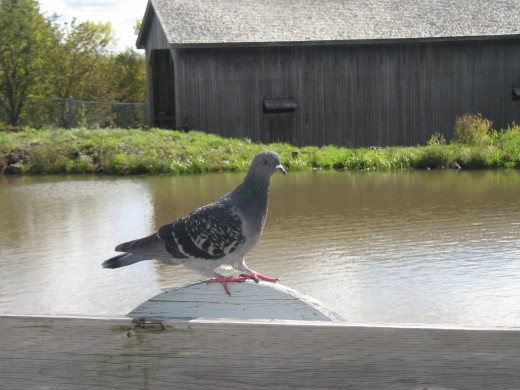

The Heart of a Little Girl
My daughter Mieke and I found Buttercup flopping around in the grass near a shed close to the fence dividing our property from the pasture in back of our home. We assumed the bird was female but didn't know at the time. Her injuries were severe enough to prevent her from flying. She could walk - sort of. Our guess is that she clipped the top of the wire fence flying and broke a few bones.
Maybe the kindest thing to do for the bird was to put it out of its misery. That's a hard lesson for a six year old girl. I gave her permission to get a box and care for the bird in the back shed. Mieke made a devoted nurse. The bird drank the water she brought and ate chicken feed. It didn't get any worse but neither did it regain the ability to fly.
This arrangement worked well for quite some time. It might have taken a whole month before one of the local cats managed to break into the shed and finish poor Buttercup off.
The story would have ended there except my daughter fell in love with pigeons and I was so impressed with her consistent care of that bird that we made arrangements for her to have a small flock to care for.

Three Lessons Learned From Our First Flock
News of my daughter's desire to keep pigeons reached some friends of ours who captured the half dozen barn birds residing in their barn, boxed them up and passed them on to us when we visited. We supplemented the flock with a couple of misfit birds from a breeder in a nearby town.
We housed them in a dilapidated shed on our property that we thought we had prepared adequately. We suspended a feeding station right in the middle of the shed, constructed nesting boxes and attached them to the walls. Once they were accustomed to their new housing, we cut two holes above the door so they could come and go as they pleased.
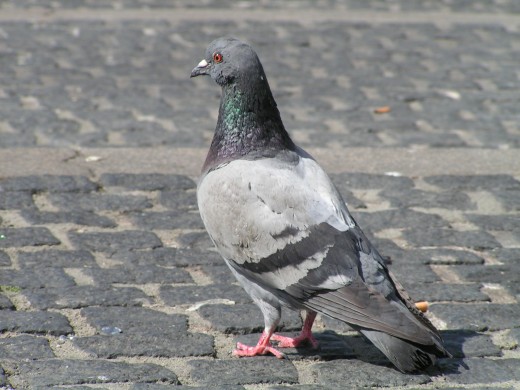
Lesson 1
Pigeons mate for life and breed at an unbelievable rate of speed. What we didn't know was that the six birds our friends gave us were three pairs of matched breeders. As soon as they settled in, they went to work.
Each pair built nests as fast as they could gather material and laid two eggs each. The male and female birds took turns sitting on the eggs. I found it fascinating to note that depending on the time of day either all the males were on the nests or all the females. That means that during the breeding season, if you see a small flock of pigeons flying together they are likely either all males or all females.
After eighteen days the eggs hatch. Both parents will feed the squabs pigeon's milk which develops in the crops of the adult birds. This is not the most appetizing thing to watch.
Then comes the surprising part. While they are feeding the squabs, mom and dad start building another nest. While they are still feeding the first pair of youngsters they will lay and brood another pair. They don't stop feeding the first pair until the second pair hatch, by this time the first batch are full size juveniles. Good breeders during the breeding season will produce a new pair of birds every five to six weeks.
It didn't take long for us to have to start thinking about curbing the birthrate or culling the flock.

Lesson 2
Pigeons are not stupid like many people suppose. When you go to feed them, you are not just some human who brings them food. They know your face. They know your personality. They also recognize danger that you yourself might not have noticed.
I remember coming to the shed and noticed one of the males sitting on his eggs, when the rest of the males were strutting around by the food. None of the birds were out flying except for his missus.
For the next three days the birds stayed in because of there was a hawk roosting across the street. I didn't have to lock them in. They just didn't go out. Mister pigeon stayed with his brood and I was certain his mate had been hawk dinner.
After three days the hawk gave up and left. Guess who came back. She hadn't been eaten. She was smart enough to stay away until the coast was clear.
I laugh sometimes when I see efforts in the city to scare pigeons away from store fronts. Fake birds of prey mounted on the roof. It only works for a short period of time. Pigeons are smart enough to figure that sort of thing out.
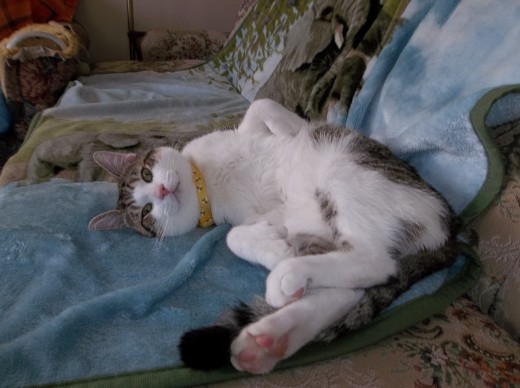
Lesson 3
Predator proofing a pigeon loft is not an easy task. A purpose built loft from reputable plans would be your best bet.
Our shed was not cat proof. Not even the second time around. We had a neighbour across the street who fed every stray cat, that somebody abandoned out in the country, raccoon and skunk. I appreciate her kind heart, but her free to roam menagerie was a major nuisance.
One morning, we found that they had broken into the pigeon loft. My daughter was heartbroken. So many of her birds were dead and the remaining birds took up residence in a neighbouring barn.
This played out a second morning after we managed to retrieve her flock in spite of our best efforts. We decided at that point, to wait until we can afford to build a proper pigeon loft. For my daughter the experience was too painful to be willing to risk going through that a third time.
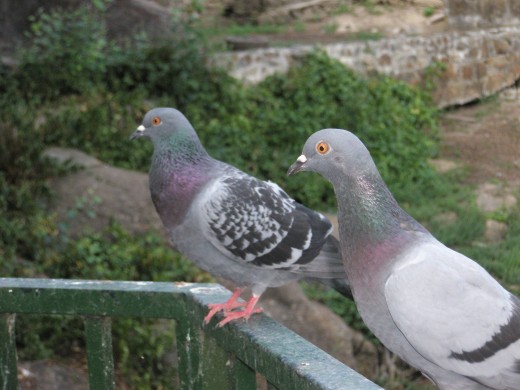
Pigeon Catching Adventure
Catching pigeons would be easy if you had a moonless night and you could reach their roosts with your hands. Conditions are not always quite that ideal.
The moonless night just requires patience. During a new moon the pigeons can't see and will stay put. The rest of the time they will fly off as soon as you get close to them.
The neighbour's barn was not built for our purposes and even poorer maintained. The hayloft floor had collapsed and the distance from where we were standing and where the pigeons roost was about thirty feet. I'm tall but not quite that tall.
We constructed a twenty five foot pole with a fishing scoop net duct taped to the end. Canadian comedian Red Green would have been proud of me. Armed with flashlights, we went on the hunt. Hot, dusty, frustrated waving that stupid pole around, we somehow recaptured the remaining survivors along with a very attractive extra. The frightened but uninjured birds were boxed up and brought home. It was an exhausting but rewarding night's work.
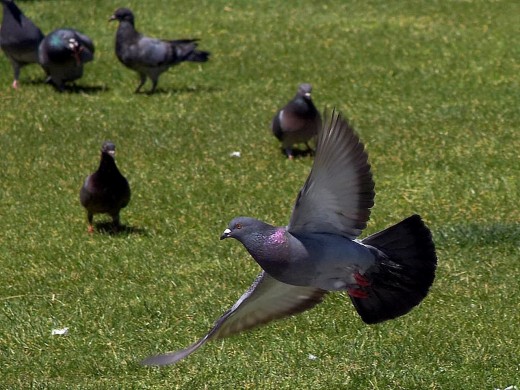
The Newcomer
That new bird was a handsome fellow. Black checker cock with white flight feathers, a splash of white across his grey belly and a miniature "string of pearls" that went from one eye around the back of his head to the other eye.
My daughter and I were on our morning feeding run, pausing to admire his plumage when I thought I saw something blue on his leg. Catching him in the cramped shed was a lot easier than our escapade the night before. Sure enough he had a band on his leg. We'd caught us a lost racing pigeon. We didn't let him go until we'd written down the band number.
Keep in mind we had no real idea how to go about using this information but in this case Google was our friend. Within an hour and a half, we had tracked down the loft where he was hatched, gotten word to the owner of our discovery, and had a message back from him advising us that we could keep him, because he was just another lost loser. Children should be issued leg bands too.
He graced our flock with his regal presence until the final episode with the neighbourhood cat problem.










